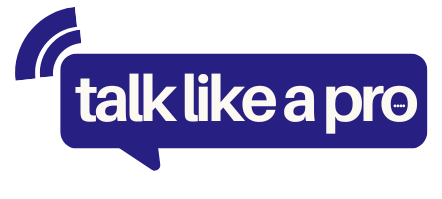Ah, the humble brag – that delicate art of tooting your own horn while pretending you’re actually playing the kazoo. Nowhere is this skill more prized than on LinkedIn, the digital playground where professionals go to peacock their accomplishments in the most tasteful way possible.
By the end of this article, you’ll be a veritable Picasso of the humble brag, painting masterpieces of self-promotion that’ll have your connections marveling at your modesty (while secretly seething with jealousy).
I’ve spent countless hours scrolling through LinkedIn feeds, analyzing the crème de la crème of humble brags.
And let me tell you, it’s been a wild ride.
From the subtle name-drops to the oh-so-casual mentions of awards, I’ve seen it all.
So buckle up, buttercup – we’re about to embark on a journey through the treacherous waters of professional self-promotion.
The Humble Brag: A Delicate Dance
Picture this: you’re at a networking event, sipping on lukewarm coffee and trying not to spill it on your freshly pressed shirt.
Someone asks what you do, and suddenly you’re faced with a dilemma.
Do you downplay your achievements and risk being overlooked?
Or do you launch into a full-blown brag-fest and come off as that guy?
Enter the humble brag – your ticket to riding the line between modesty and self-promotion.
It’s like trying to pat yourself on the back while simultaneously shrugging your shoulders.
Not easy, but oh-so-satisfying when you pull it off.
Why LinkedIn is the Ultimate Humble Brag Arena
LinkedIn is like the Hunger Games of professional networking.
Everyone’s fighting for attention, but instead of bows and arrows, we’re armed with carefully curated profile pics and strategically worded status updates.
It’s a platform where humblebragging isn’t just accepted – it’s practically expected.
Think about it: where else can you casually mention your latest promotion sandwiched between a heartfelt post about teamwork and an inspirational quote?
It’s a humble bragger’s paradise, I tell you.
The Art of the Subtle Name-Drop
One of the cornerstones of a good humble brag is the art of the subtle name-drop.
It’s like seasoning your LinkedIn posts with a sprinkle of “look who I know” without drowning them in a sea of pretentiousness.
For example, instead of saying “I had lunch with Elon Musk,” try something like:
“Grabbed a quick bite today. Funny how a simple sandwich can lead to fascinating conversations about the future of technology. #JustAnotherTuesday”
See what I did there?
I didn’t even mention ol’ Elon by name, but the implication is clear.
It’s like wearing designer underwear – you know it’s there, but you don’t need to show it off to everyone.
The “Aw, Shucks” Approach
Another classic move in the humble brag playbook is the “Aw, shucks” approach.
This is where you downplay your accomplishments so hard that it actually highlights them even more.
It’s like when your friend says, “Ugh, I hate how my hair looks in this photo” and you’re thinking, “Are you kidding? You look like a supermodel who just walked off a shampoo commercial.”
On LinkedIn, it might look something like this:
“Still can’t believe they chose little old me for the cover of Forbes. Guess they must’ve run out of actual successful people this month! 😅 #Blessed #StillLearning”
Oh, honey. We see what you did there.
And we’re simultaneously rolling our eyes and slow-clapping.
The “Just Doing My Job” Maneuver
This move is all about making your incredible achievements sound like just another day at the office.
It’s the humble brag equivalent of Superman saying, “Oh, saving the world? It’s no big deal, really. All in a day’s work!”
For instance:
“Another 80-hour week in the books. Who knew leading a Fortune 500 company could be so time-consuming? #WorkLifeBalance #CEOProblems”
Poor you, having to work so hard at your incredibly prestigious job.
How ever do you manage?
The Gratitude Gambit
Ah, gratitude – the humble bragger’s secret weapon.
By focusing on how thankful you are, you can slip in mentions of your accomplishments without seeming like you’re bragging at all.
It’s like wrapping a humblebrag burrito in a tortilla of appreciation.
Try something like:
“So grateful for my incredible team. Their hard work made it possible for us to close that $10 million deal. Couldn’t have done it without them! #Teamwork #Blessed”
See how that works?
You’ve managed to mention your massive deal while giving credit to others.
It’s like the professional equivalent of “I’d like to thank the Academy.”
The Backdoor Brag
This technique involves mentioning a small flaw or problem, but in doing so, revealing something much more impressive.
It’s like complaining about the terrible cellphone reception… on your private yacht.
On LinkedIn, it might look like this:
“Ugh, jet lag is the worst. These back-to-back speaking engagements in Tokyo, London, and New York are really taking a toll. Any tips for adjusting to different time zones? #TravelProblems”
Poor baby, having to travel the world for your high-profile speaking gigs.
How ever will you cope?
The “Who, Me?” Technique
This move involves expressing genuine surprise or disbelief at your own success.
It’s like the professional version of the “I woke up like this” selfie.
For example:
“Still pinching myself. Never thought my little startup would end up being acquired by Google. Guess dreams do come true! #Entrepreneurlife #Grateful”
Oh, stop it, you.
Of course Google wanted to buy your “little” startup.
How could they resist?
The Humble Brag in Action: Case Studies
Let’s look at some real-world examples of humble brags in their natural habitat – the LinkedIn feed.
Case Study 1: The Accidental Achiever
“Oops! Accidentally wore my ‘Entrepreneur of the Year’ medal to the grocery store today. So embarrassing! 🙈 #AbsentMindedProfessor”
Analysis: This post manages to mention a major award while painting the poster as charmingly forgetful.
It’s like “accidentally” leaving your Oscar on the kitchen counter when your friends come over for dinner.
Case Study 2: The Reluctant Leader
“When I started this company in my garage, I never imagined I’d one day be responsible for over 1000 employees. The weight of leadership can be overwhelming sometimes. Any advice from fellow CEOs on managing growth? #StartupLife #LeadershipChallenges”
Analysis: This post showcases the company’s impressive growth while positioning the poster as a humble leader seeking advice.
It’s like asking for tips on how to polish your Nobel Prize – sure, you need the advice, but we’re all really focused on the fact that you HAVE a Nobel Prize.
The Dos and Don’ts of LinkedIn Humble Bragging
DO: Keep it subtle.
The best humble brags are like ninjas – they sneak up on you before you even realize what’s happened.
DON’T: Overdo it.
If every post is a humble brag, people will start to see right through you.
Mix it up with some genuine content too.
DO: Use humor.
A well-placed joke can make even the most blatant brag go down smoother than a perfectly aged whiskey.
DON’T: Put others down to elevate yourself.
The humble brag should be about lifting yourself up, not pushing others down.
DO: Tie your accomplishments to gratitude or lessons learned.
This adds depth to your brag and makes it more palatable.
DON’T: Forget your audience.
What impresses your industry peers might be lost on your Great Aunt Mildred who just joined LinkedIn to see your photos.
The Psychology Behind the Humble Brag
Now, you might be wondering, “Why do we even bother with this song and dance? Why not just brag outright?”
Well, my friend, it’s all about psychology.
See, humans are complex creatures.
We want to be seen as successful, but we also don’t want to be seen as arrogant.
It’s like trying to eat a whole cake while convincing everyone you’re on a diet.
The humble brag allows us to have our cake and eat it too.
It satisfies our need for recognition while maintaining an air of modesty.
It’s like social lubrication for the ego.
The Risks of Humble Bragging
But beware, dear reader.
The humble brag is a double-edged sword.
Wield it carelessly, and you might end up cutting yourself.
Research has shown that humble brags can actually be less effective than outright bragging or even complaining.
Why?
Because people can sense the inauthenticity.
It’s like wearing a toupee – you might think you’re fooling everyone, but trust me, we can all see it.
Alternatives to the Humble Brag
So what’s a success-story-sharing professional to do?
Fear not, for there are alternatives!
- The Direct Approach: Sometimes, honesty really is the best policy.
Share your accomplishments proudly, but balance them with genuine posts about challenges and learning experiences.
- The Storytelling Method: Instead of bragging, tell a story that naturally highlights your achievements.
It’s like the difference between saying “I’m a great cook” and describing the three-course meal you just whipped up.
- The Gratitude Express: Focus on expressing genuine thankfulness for the opportunities and people that have contributed to your success.
It’s like giving an Academy Award speech, but without the swelling orchestra music cutting you off.
Conclusion: Brag Like a Boss (Humbly, of course)
And there you have it, folks – the fine art of humble bragging on LinkedIn, served up with a side of self-awareness and a sprinkle of sass.
Remember, the key to a good humble brag is like the key to a good martini – it’s all in the balance.
Too much olive juice and you’ve ruined the drink.
Too much brag and you’ve ruined your reputation.
So go forth and humble brag, my friends.
May your accomplishments be many and your modesty be believable.
And if all else fails, just remember: at least you’re not that guy posting inspirational quotes every five minutes.
Now THAT’S something to be humble about.




